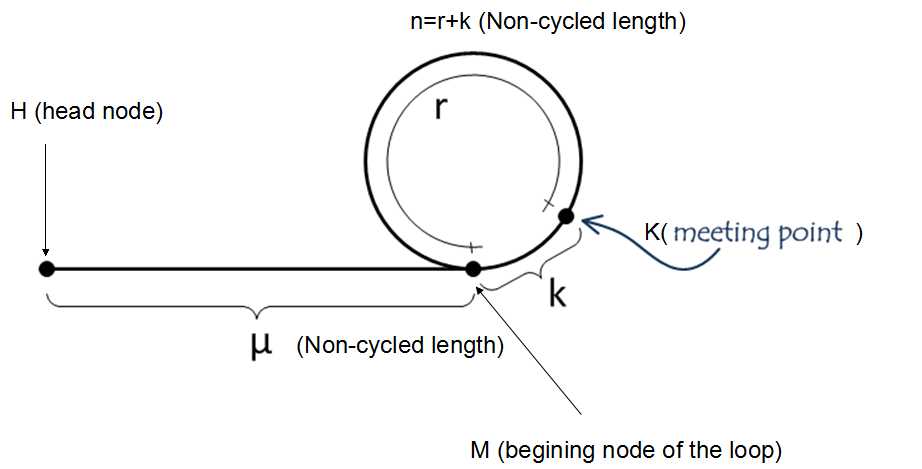142 Linked List Cycle II
Given a linked list, return the node where the cycle begins. If there is no cycle, return null.
Note: Do not modify the linked list.
Solution
/**
* Definition for singly-linked list.
* struct ListNode {
* int val;
* ListNode *next;
* ListNode(int x) : val(x), next(NULL) {}
* };
*/
class Solution {
public:
ListNode *detectCycle(ListNode *head) {
if ( head == NULL or head->next == NULL ) return NULL;
ListNode *p1 = head, *p2 = head->next;
while ( p1 != p2 ) {
p1 = p1->next;
if ( p2->next == NULL ) return NULL;
p2 = p2->next->next;
if ( p2 == NULL ) return NULL;
}
p1 = head;
p2 = p2->next;
while ( p1 != p2 ) {
p1 = p1->next;
p2 = p2->next;
}
return p1;
}
};
Thoughts
Step1:
Detect whether there is a cycle in the linked list. Use two pointers, a fast one (p2) and a slow one (p1). Check whether they can meet before reaching the end of the linked list.

$$x=\mu+m(k+r)+k$$
$$2x=\mu+n(k+r) + k$$
$$\Rightarrow \mu+k = (n-2m)(k+r)$$
- $$(\mu+k)$$ is an integer multiple of $$(k+r)$$ (the length of the cycle). When $$(n-2m)=1$$, $$\mu+k = k+r$$, thus $$\mu = r$$.
Step2:
One pointer (p2) starts from the meeting point, and the other (p1) starts from the head.
- Let them traverse in the same speed, and will meet at the beginning node of the cycle.